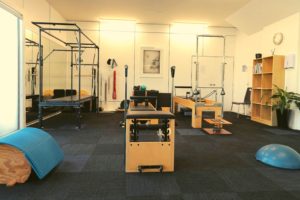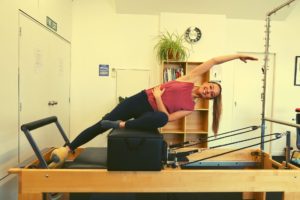Many people walk into our Physio and Pilates studio and are astonished at the strange looking equipment we have in there. If you haven’t come across Pilates equipment it can look a bit like medieval torture devices…….or something a little more x-rated!!
In-fact, studio Pilates equipment was developed by the fabulous Mr Joseph Pilates in the 1920s. Joseph had a colourful and interesting life. Part of that included being interned in England during the First World War (as he was German). During this time he worked in hospitals and helped wounded soldiers rehabilitate when they were bed bound. This is how he came up with the ideas that later led to the development of the reformer and trapeze table. He later used these in his exercise studio in New York that was frequented by ballet dancers. These machines are still used across the world today in many, many Pilates studios, including our own here in Wanaka.
Why use machines instead of floor based Pilates?
- Being able to use the various springs, bars and straps to provide external resistance to an exercise can make it easier to get the correct muscle activation and, ultimately, a more effective exercise.
- Using the machines can help you hone in on specific movements or muscle activation, easier than on a mat.
- Starting out – Lots of people think you have to be really good to studio Pilates but it’s actually really good for complete beginners. It is easier to get a sense of position against the equipment, especially if you are less body-aware!
- They are great for people who have trouble getting on and off the floor!
- All of the reasons above, make it great for rehabbing from an injury.
Here’s a run through of the machines we have at Central Lakes Physio & Pilates
The Reformer
The reformer is a bed-like frame with a flat platform that we call the carriage that rolls back and forwards on wheels. There are springs underneath this carriage that can be connected or disconnected from the end of the frame. This alters the amount of resistance to the carriage rolling. There are shoulder blocks attached to the carriage that stop a person sliding, and a foot bar at the end to push against. There are also long cords attached from the carriage to some pulleys at the top of the frame. This allows the carriage to be moved by pulling these cords with your arms or legs. Very clever!
The Trapeze Table (Trap Table)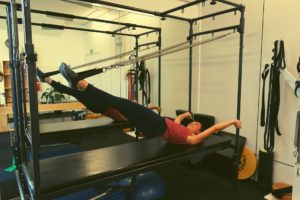
You can compare a trap table to a 4-poster bed, although it might be a little less comfortable! It’s basically a bed, with upright pillars at every corner and a metal frame overhead. There are various points on these upright pillars that you can attach springs to be able to apply load, or support to an exercise. And there is a metal bar that can slide along the upper frame that allows suspension from the top at any point. From this you can carry out exercises where you hang. There is also a push bar attached between the uprights at one end of the table. When combined, these features provide countless numbers of exercise variations for the body.
The trap table is a beautiful, versatile piece of equipment that is also very stable. The ability to move bars and attach varying springs at many different points allows for exercises to be adapted for people of all sizes, shapes and abilities
The Wunder Chair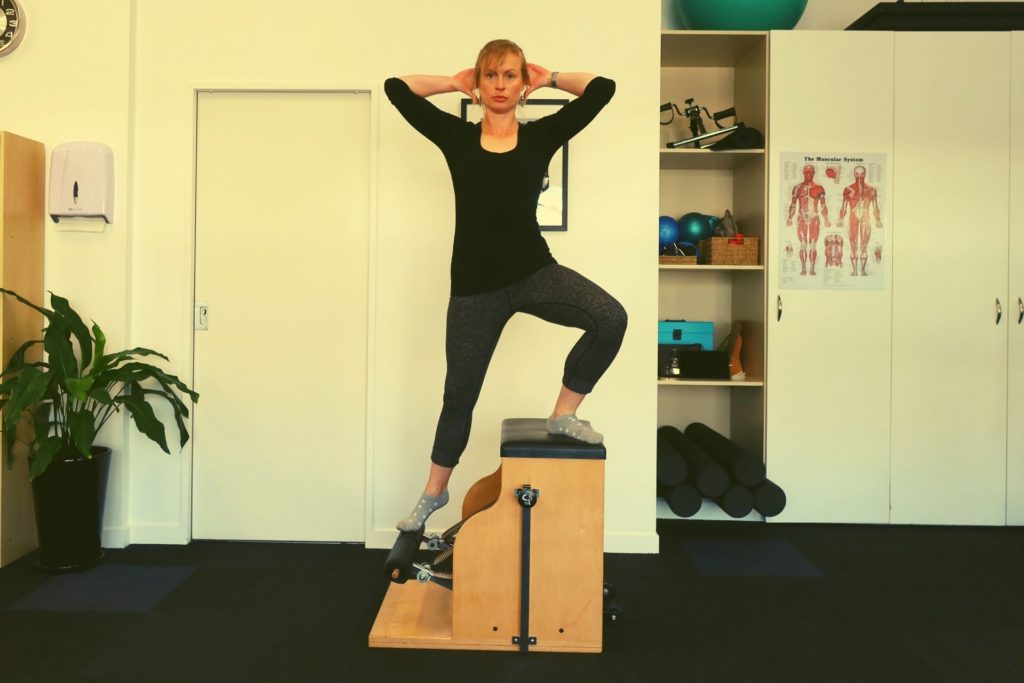
The Chair, as we tend to call it, kind of looks like a chair, if you use your imagination! It’s basically a box, with a pedal on one side that can be split in two, with some detachable vertical handles. The top is padded to make it comfortable and the handles can be adjusted to different heights. The pedals are connected to the main body by springs, that can be altered to change the resistance. Although it may be the smallest of the large Pilates equipment there is still a myriad of exercises that it can be used for. The Chair is great for doing upright, functional exercises, but can be used in all sorts of positions.
Do I have to be really experienced to do Studio Pilates?
NO! Studio Pilates is for everyone. In fact, quite often it is beneficial to start out with studio Pilates before going into a mat class. This is because it can be easier to ensure you are getting the correct muscle activation on the equipment. We often recommend that people recovering form injuries start with studio Pilates before going into a mat class.
Our Classes
Our classes run as a maximum of 4 in the class. The instructor rotates around the participants giving them each an individualised programme. That way it doesn’t matter if everyone in the class is at completely different levels! Many people enjoy being able to come into the class and say “I’ve had a bit of a tweaky lower back this week, can we work on that?” or “it’s be a really stressful week can we focus and stretching and breathing?”.
We have several studio Pilates instructors at the clinic, all with very different backgrounds and training. So feel free to try them all and see who you gel with best!
To find out more about our classes please visit our website page. Our timetable can be viewed at this page.
